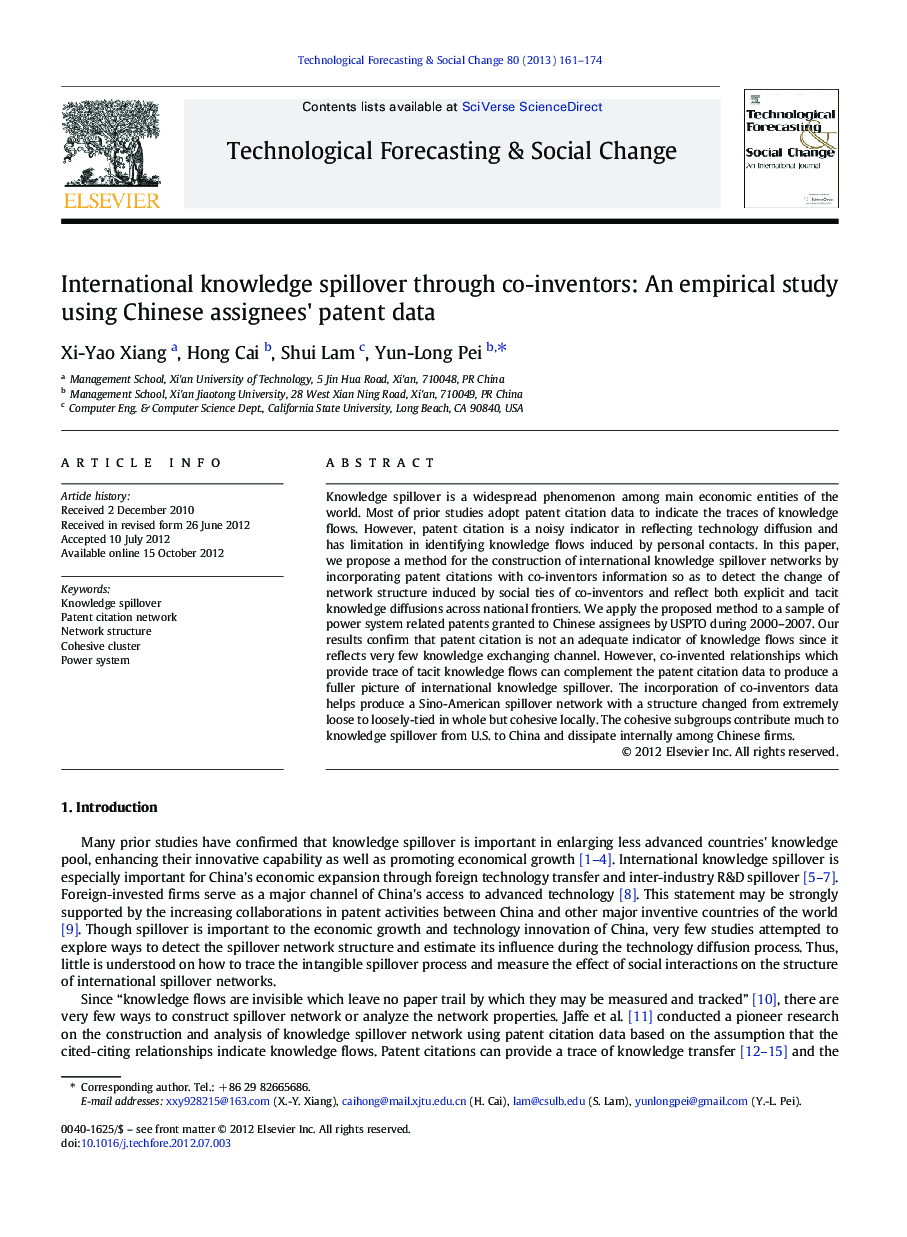| Article ID | Journal | Published Year | Pages | File Type |
|---|---|---|---|---|
| 896778 | Technological Forecasting and Social Change | 2013 | 14 Pages |
Knowledge spillover is a widespread phenomenon among main economic entities of the world. Most of prior studies adopt patent citation data to indicate the traces of knowledge flows. However, patent citation is a noisy indicator in reflecting technology diffusion and has limitation in identifying knowledge flows induced by personal contacts. In this paper, we propose a method for the construction of international knowledge spillover networks by incorporating patent citations with co-inventors information so as to detect the change of network structure induced by social ties of co-inventors and reflect both explicit and tacit knowledge diffusions across national frontiers. We apply the proposed method to a sample of power system related patents granted to Chinese assignees by USPTO during 2000–2007. Our results confirm that patent citation is not an adequate indicator of knowledge flows since it reflects very few knowledge exchanging channel. However, co-invented relationships which provide trace of tacit knowledge flows can complement the patent citation data to produce a fuller picture of international knowledge spillover. The incorporation of co-inventors data helps produce a Sino-American spillover network with a structure changed from extremely loose to loosely-tied in whole but cohesive locally. The cohesive subgroups contribute much to knowledge spillover from U.S. to China and dissipate internally among Chinese firms.
► We proposed a new method for knowledge spillover network constructing. ► We observe structure changes by adding co-invented ties. ► Co-inventors facilitate tacit knowledge transfer by making network denser. ► Clusters of co-inventors are pillars of knowledge spillover in network.
